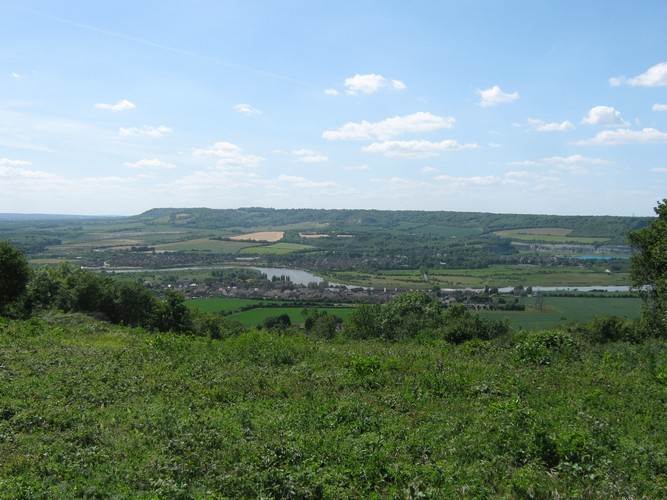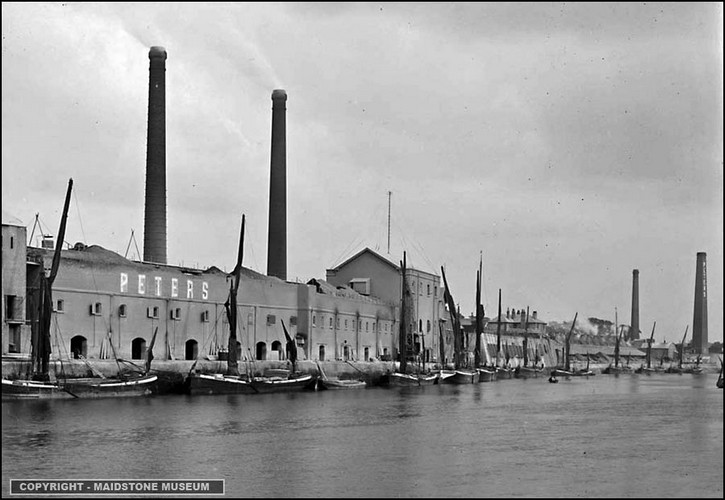Welcome
Update June 2015 - This website's domain and web hosting will need renewing within the next year. In order to keep this website online, please consider making a donation of any amount below. We would also welcome any offers from anyone who would be interested in taking the website over. You can contact us at history@wouldhamvillage.com. Thank you.

Click on the photo above to enlarge. Photo kindly provided by Bob Donkin (Flickr).
Situated on the banks of the River Medway, Wouldham may have always had human habitation. The river has provided the village with food and transport for many centuries.
The first definite mention of Wouldham was in a 751 A.D Saxon record. This record showed King Ethelbert of Kent giving "Wuldeham" to the Church of St Andrew in Rochester, which later became the Catholic Church.
There are several different suggestions for the origin of Wouldham's name. The most well known one is Wolde (a treeless down) and Ham (a settlement).
Wouldham had three Manors. The Bishop of Rochester was the overall Lord of the Manor, both before and after the Reformation in the reign of Henry VIII. During the occupation of Richard Byset in 1390, we first hear of the The Manor of Littelhall which covered the land between the Manors of Rings and Woldham. Sir Humphrey Starkey purchased the estate around 1490 and is thought to have built Starkey's Castle. However, it is been suggested that instead, this was Richard Byset's building with alterations being made in the fifteenth century.
Up until the mid-1800s, Wouldham's working population was mainly agricultural workers. However, this was soon to change, with Wouldham becoming at the forefront of the cement making industry, having both the Wouldham Court and Peters/Wouldham Hall works operating on the banks of the river.

Peters Wouldham Hall Works. Photo kindly provided by Maidstone Museum.
This growing industry meant that houses for the workers were built and the village expanded. The population of Wouldham between 1801 and 1901 is as follows:
1801 - 165
1811 - 159
1821 - 176
1831 - 247
1841 - 284
1851 - 343
1861 - 433
1871 - 818
1881 - 1,268
1891 - 1,373
1901 - 1,272
It is also known that the number of occupied houses grew from 154 in 1871 to 258 in 1891.
After the decline of the cement industry, Wouldham gradually began to turn into the village that you see today, which show little evidence of the previous industry that dominated the village before.
This website has been built as an attempt to retain the history which may otherwise become forgotten over time.
Sources
Information that has been gathered in order to build this website has come from many different sources such as books, residents and websites.
The following books have been of much use:
Five Medway Villages: Pictorial History of Aylesford, Burham, Wouldham, Eccles and Borstal by Winifred F. Bergess and Stephen Sage
Industrial Medway: An Historical Survey by J.M Preston
The Medway Shore as it Was: Burham to Borstal by John K. Austin
Other individuals who have been of great help include Jim Bell, Mark Peters and Roger Webb. Also, another thanks needs to be given to Mark Peters for producing the banner at the top of the website.
We would also like to thank the many organistations and individuals who have allowed us to use their photos on this website. They have been credited individually underneath each photo.
Guestbook
Do you have any comments or want to contact other people visiting the website? If so, please leave a message in our Guestbook.